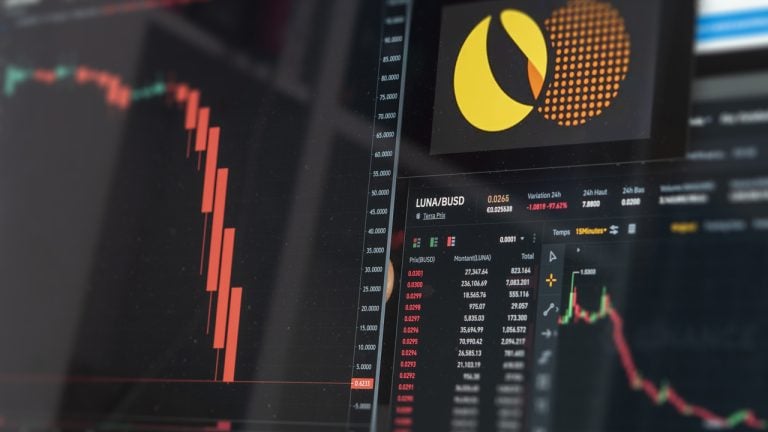 Binance founder Changpeng Zhao (CZ) has reportedly told staff to expect some difficult months as the leading cryptocurrency exchange is seeing customer withdrawals. The warning comes while the crypto industry is facing challenges after high-profile bankruptcies and amid tightening regulations. $3 Billion Pulled Out From Binance at Peak, Nansen Data Shows Binance, the world’s largest […]
Binance founder Changpeng Zhao (CZ) has reportedly told staff to expect some difficult months as the leading cryptocurrency exchange is seeing customer withdrawals. The warning comes while the crypto industry is facing challenges after high-profile bankruptcies and amid tightening regulations. $3 Billion Pulled Out From Binance at Peak, Nansen Data Shows Binance, the world’s largest […]
Demand for liquid Ethereum staking options gains pace in the months following the Merge, according to blockchain data.
Blockchain data analytics carried out by Nansen highlights the ever-growing amount of Ether (ETH) being staked across various staking solutions in the months following Ethereum’s shift to proof-of-stake (PoS) consensus.
The highly anticipated Merge has been a boon for decentralized finance (DeFi) in general, and staking solutions have been in high demand since Ethereum’s shift to PoS. This is according to blockchain data from a variety of staking solutions across the Ethereum ecosystem.
Nansen’s report highlights the impact of the Merge in introducing staked ETH as an out-and-out cryptocurrency-native yield-bearing instrument that has quickly outstripped other collateralized yield-bearing services.
The likes of Uniswap and other automated-market makers and liquidity providers remain popular but pale in comparison to the total value locked in staked ETH solutions. Over 15.4 million ETH is locked in Ethereum’s staking contract, which values the total staked ETH in the top six cryptocurrencies by market capitalization alone:
“Staked ETH is thus the first yield-bearing instrument to reach significant scale in DeFi, and has the potential to both significantly grow and radically transform the ecosystem in the coming years.”
Nansen provides some interesting insights from liquid-staked derivatives data. When Ethereum shifted to PoS, miners were replaced by validators who had to deposit or stake 32 ETH in order to propose new blocks and earn protocol rewards. Users that are unable or unwilling to stake 32 ETH can participate in pooled staking, also known as liquid staking. This also allows users to withdraw staked ETH at any time.
Nansen’s metrics reveal that liquid staking holdings are weighted toward long-term holders, while recently launched protocols are attracting new deposits faster than established services. 5.7 million of the total 14.5 million ETH is staked in staking pools like Lido and Rocket Pool, accounting for over 40% of the total staked ETH in the ecosystem.
Lido’s stETH dominates the space with a 79% share of the total market supply of staked ETH. 52% of the stETH tokens are found in Aave, Curve and Lido’s wrapped stETH contract indicating interest and utility for investors and DeFi applications. stETH has also seen a 127% increase in average daily trading volume since the Ethereum Merge.
Related: 64% of staked ETH controlled by 5 entities — Nansen
Meanwhile, Coinbase’s Ethereum staking pool cbETH has surpassed all other assets besides stETH in supply. Both Rocket Pool’s rETH and Coinbase’s cbETH have seen the most growth over the past three months, at 52.5% and 43.3%, respectively.
The growth of Coinbase’s ETH staking option also suggests that everyday users still trust centralized entities and are content earning yield from staked ETH as opposed to more complex, on-chain, yield-bearing strategies.
 While the analytics firm Nansen published a report that points to the Terra collapse igniting the flames of FTX’s and Alameda Research’s financial problems, onchain data from the intelligence and research firm Glassnode suggests FTX’s “cracks had formed as far back as May-June.” Glassnode’s report highlights a “growing pool of [onchain] data” that shows FTX’s […]
While the analytics firm Nansen published a report that points to the Terra collapse igniting the flames of FTX’s and Alameda Research’s financial problems, onchain data from the intelligence and research firm Glassnode suggests FTX’s “cracks had formed as far back as May-June.” Glassnode’s report highlights a “growing pool of [onchain] data” that shows FTX’s […] While there’s been a lot of discussions concerning proof-of-reserves, self-custody, and the more than $5 billion in bitcoin and ethereum that left exchanges between Nov. 7 through Nov. 14, 2022, Binance’s bitcoin stash has grown significantly since Nov. 12. In fact, metrics from cryptoquant.com indicate that Binance’s bitcoin reserves reached an all-time high on Nov. […]
While there’s been a lot of discussions concerning proof-of-reserves, self-custody, and the more than $5 billion in bitcoin and ethereum that left exchanges between Nov. 7 through Nov. 14, 2022, Binance’s bitcoin stash has grown significantly since Nov. 12. In fact, metrics from cryptoquant.com indicate that Binance’s bitcoin reserves reached an all-time high on Nov. […]
Crypto analytics firm Nansen is turning to on-chain data to take a deeper look at the relationship between embattled crypto exchange FTX and its affiliated trading firm Alameda Research. In a new report, Nansen says it conducted a blockchain analysis of Sam Bankman-Fried’s two companies amid allegations that FTX was started to raise funds for […]
The post Crypto Analytics Platform Nansen Finds FTX May Have Colluded With Alameda Since the Exchange’s Inception appeared first on The Daily Hodl.
 An analysis of the FTX and Alameda Research collapse has been published by the blockchain and crypto analytics firm Nansen and the report notes that the Terra stablecoin collapse, and the liquidity crunch that ensued, likely started the domino effect that led to the company’s implosion. The study from Nansen further details that “FTX and […]
An analysis of the FTX and Alameda Research collapse has been published by the blockchain and crypto analytics firm Nansen and the report notes that the Terra stablecoin collapse, and the liquidity crunch that ensued, likely started the domino effect that led to the company’s implosion. The study from Nansen further details that “FTX and […]
Researchers at Nansen concluded that at least 86% of all FTT tokens were initially controlled by Alameda or FTX.
According to a new report published by blockchain analytics firm Nansen on Nov. 17, bankrupt cryptocurrency exchange FTX was allegedly intertwined with that of crypto trading firm Alameda Research from the very beginning. Both entities were created by crypto businessman Sam Bankman-Fried, who is now being considered for extradition by U.S. authorities for his role in the collapse of the exchange.
Based on available on-chain evidence, Nansen identified a series of wallets placing Alameda as one of the earlier liquidity providers for FTX in May 2019. Of the initial 350 million in its native token FTT's supply, 27 million allegedly ended up on Alameda's FTX deposit wallet, while the two firms controlled 86% of the supply combined. The setup meant very little FTT was circulating in the open market, making the tokens extremely susceptible to price manipulation.
Fast forward to the bull market of 2021 when the FTT token rose from its seed price of $0.10 to $84; Nansen believed that the two firms could not cash out their large positions without seriously spooking the markets, and likely used their FTT positions as collateral to take out loans.
The blockchain analytics firm then pointed out almost $1.6 billion worth of FTT being exchanged between Alameda Research and troubled brokerage Genesis Trading in September 2021. The problem, according to Nansen, began when FTX and Alameda started reinvesting the loans back into their own FTT tokens in order to bid up the price, resulting in mounting leverage.
The report continued that things appeared to work fine until the crypto crash of June 2022. With the blowup of centralized finance, or CeFi, firms such as Three Arrows Capital and Celsius, which all had exposure to Genesis Trading, Alameda likely faced a liquidity crunch that could not be resolved unless it sold its FTT tokens for cash. However, this was not possible without crashing its price and causing contagion in the FTX exchange.
On-chain then showed over $4 billion of FTT tokens were sent from Alameda to FTX, illustrating the possibility of a loan issuance in the equivalent amount. Some have raised the likelihood of FTX moving customer deposits as the basis for an emergency liquidity injection into Alameda.
In any scenario, the issue finally came to light when Changpeng Zhao, CEO of cryptocurrency exchange Binance, decided to liquidate its leftover investments in FTX consisting of FTT. The move spooked investors and simultaneously caused both a bank run on the FTX exchange and intense selling pressure on FTT. Soon, users realized the that the funds FTX promised simply weren't there, leading to the beginning of the end of what used to be the world's third-largest cryptocurrency exchange.

Blockchain analytics firm Nansen has released an overview of major cryptocurrency exchanges’ onchain asset holdings and portfolios in the wake of FTX’s collapse.
The collapse of cryptocurrency exchange FTX has put industry peers under the microscope with calls for transparent accounts of token holdings and assets under management.
Major cryptocurrency exchanges like Binance, Huobi, OKX and Crypto.com have made efforts to share details of their assets and portfolios to assuage the wider space. This comes after investor confidence has been shaken, with users across the ecosystem moving Bitcoin (BTC) and other tokens off exchanges to avoid potential contagion from the FTX fallout.
Blockchain analytics platform Nansen provides industry insights and is known for its wallet labeling features that track addresses across multiple blockchains. In a series of Tweets posted on Nov. 15, Nansen listed seven major exchanges, their relevant portfolios and explanatory statements of accounts.
Related: Bitfinex CTO releases proof of reserves amid FTX bankruptcy fiasco
The assets and net worth of the exchanges is the sum of holdings in wallet addresses provided by the firms on blockchains that Nansen monitors. The analytics platform also notes that the figures are not an “exhaustive or complete statement of the actual assets/reserves held.”
The exchanges accounted for include Binance, Crypto.com, OKX, KuCoin, Deribit, Bitfinex and Huobi.
Binance, widely regarded as the largest global exchange by transaction volume, holds around $64.3 billion worth of assets across the Bitcoin, Ethereum, TRON and BNB blockchains. This eclipses the other exchanges by a substantial amount.
3/ @binance portfolio: https://t.co/mdsVyJNKYZ
— Nansen (@nansen_ai) November 15, 2022
Current holdings: $64.3B (removed Binance Bridge pegged tokens, only include their original assets)
Chains:#Bitcoin#Ethereum#Tron#BNBChain
Binance statement:https://t.co/BpTv4wpQwO pic.twitter.com/cgrP2MXh4s
Bitfinex has the second largest asset holdings in reserve of the seven exchanges according to data provided by the company. $8.23 billion of assets are held across the Bitcoin, Ethereum, Polygon, TRON, Solana, Acala, Avalanche, Cosmos, Fantom, Near, Terra and Terra Classic blockchains.
9/ @HuobiGlobal portfolio: https://t.co/ck3ML981rz
— Nansen (@nansen_ai) November 15, 2022
Current holdings: $3.31B
Chains:#Bitcoin#Ethereum#Polygon#TRON#Solana#Avalanche#Cosmos
Huobi's statement: https://t.co/vBf7Y2V4Nc pic.twitter.com/vcM6xoaXfQ
Huobi's assets amount to a traced $3.3 billion across eight different chains. OKX reportedly holds $5.84 billion in cryptocurrency assets across the Bitcoin, Ethereum, Polygon, Arbitrum, TRON and Avalanche blockchains.
5/ @okx portfolio: https://t.co/fkfUzbAusT
— Nansen (@nansen_ai) November 15, 2022
Current holdings: $5.84B
Chains:#Bitcoin#Ethereum#Polygon#Arbitrum#TRON#Avalanche
OKX's statement:https://t.co/jmEfmntgg3 pic.twitter.com/1TYCRfErrn
Crypto.com holds an estimated $2.36 billion in assets across seven chains. KuCoin addresses account for $2.65 billion in assets on eight different blockchains and Deribit holds around $1.46 billion worth of assets on the Bitcoin, Ethereum and Solana blockchains.
Nansen co-founder and CEO Alex Svanevik told Cointelegraph that the firm is planning to publish preliminary findings on the FTX situation this week. Nansen previously unpacked onchain findings after the cataclysmic collapse of the Terra ecosystem in May 2022.

The chief executive of a prominent crypto exchange is revealing some of the platform’s reserve assets in a first step towards transparency. Crypto.com CEO Kris Marszalek says that investors can expect the crypto exchange to remain safe and transparent while announcing a full audit that would prove Crypto.com has the 1:1 ratio of reserve assets […]
The post Crypto.com Reveals $2,800,000,000 in Bitcoin and Altcoin Reserves in Bid for Transparency appeared first on The Daily Hodl.
 Admins of the Telegram group of the FTX community stated that the platform had been hacked and all of the funds of the exchange seemed to be gone. FTX U.S. General Counsel Ryne Miller, who reportedly pinned the message in the group, explained he was investigating “abnormalities” regarding FTX balances across other exchanges. FTX Officials […]
Admins of the Telegram group of the FTX community stated that the platform had been hacked and all of the funds of the exchange seemed to be gone. FTX U.S. General Counsel Ryne Miller, who reportedly pinned the message in the group, explained he was investigating “abnormalities” regarding FTX balances across other exchanges. FTX Officials […]